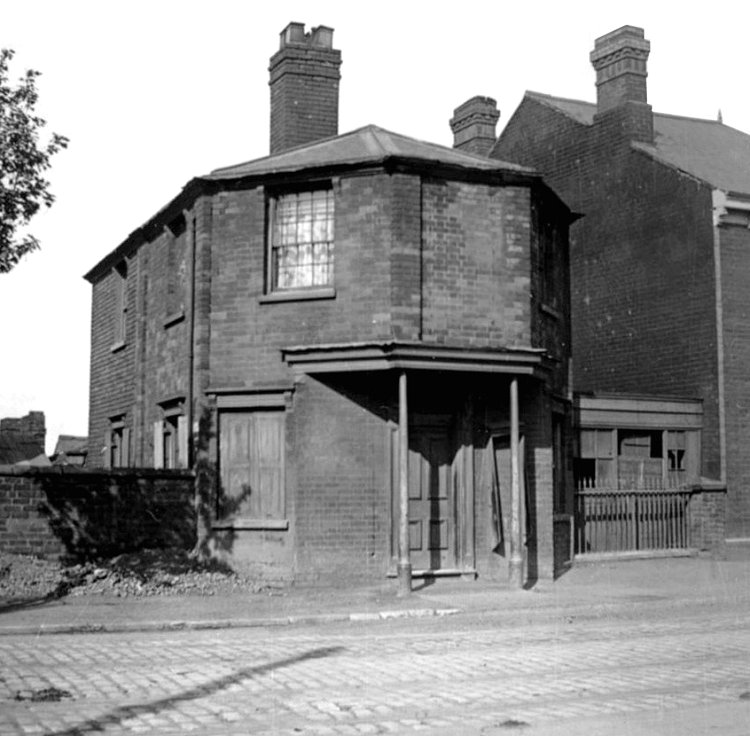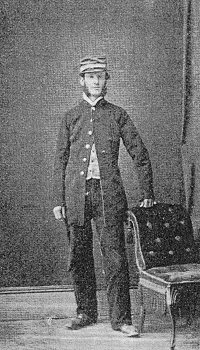Wolverhampton and District Old Toll Gates The first record of road tolls in England bears the date 1346, when a commission was granted by King Edward III to lay a toll on carriages passing from St. Giles to Temple Bar, and on carriages passing towards Portpool, now Gray's Inn Lane, London, the roads in those places having become impassable from want of other provision for their maintenance. From this small beginning the turnpike system gradually spread itself all over England, Ireland, and Scotland. Its inconvenience was very sensibly felt for many years, but Ireland, which at one time was studded all over with gates on its turnpike roads, was the first to entirely suppress them, an Act being passed in 1857, abolishing the whole of the toll-gates remaining at that time. London and the suburbs followed as the result of a strong agitation, but it was many years before road tolls were entirely abolished, and a rate levied on the parishes or districts substituted.
There were, eight toll-gates between Wolverhampton and Birmingham. The first was at Monmore Green, near Ettingshall Lane; the second at the top of Stowheath Lane; the third this side of Bilston; the fourth close to Wednesbury; the fifth at Hill Top; the sixth at West Bromwich; the seventh called the "Three-mile Oak Gate," near the West Bromwich Albion Football Field; and the eighth at Handsworth.
Mr. Rogers is now in his 76th year, but looks hale and hearty. He comes of a long-lived family, his father, who resided in North Street, dying at the ripe old age of 89, whilst his grandmother was 101 years and 9 months old when she died in 1864. It may be added that Mr. Rogers was for many years well known as an amateur florist, having taken several prizes in the Cottagers' Class at the Wolverhampton Horticultural Society's Shows. Our illustration shows Mr. Rogers in the old-fashioned uniform of 30 years ago. We give an illustration of the old Penn Road toll-gate and house, the next one being at Himley, another at Kingswinford, and then at Bromley Lane, one at Wordsley; with another at Coalbournbrook; near Stourbridge, making six between Wolverhampton and Stourbridge. The Penn Road toll-gate stood originally at the bottom of Poole Street, the chemist shop (late Dr. Hamp's) being known as the toll-house. It was afterwards removed to near the old gravel pits, and finally to the bottom of Coalway Lane, as shown in our illustration.
In consequence the terminus had to be some fifty yards from the gate, the law being that anyone riding to within a certain distance of a toll-gate had to pay toll, it being immaterial whether they passed through or not. For Stafford, the first gate was at the bottom of Lower Stafford Street, removed later on to near where the Great Western Bridge new crosses the road, the next one, known as Oxley Gate, was situated this side of Oxley Manor lodge, whilst a toll-bar existed at the bottom of Bushbury Lane. The first gate on the Dudley Road was at the Fighting Cocks, where there was a gate for Sedgley, and another for Bilston, there was another at "Gibbet Lane," New Village, and another at the top of Ettingshall Lane, then known as Hell Lane. In order to avoid the toll a certain Colliery Company near the Rifle Range constructed a road of about 200 yards in length for their carts, and many horsemen were known to get on the canal side at Millfields (Bilston) and travel that way so far as Monmore Green in order to evade paying the toll. The journey must have had its inconveniences, as it was necessary for them to dismount in order to pass under each of the six bridges which cross the canal. On the Cannock Road the old toll-house at the corner of Bushbury Road is still in existence, and the one on the Willenhall Road stood near the junction of Lower Horseley Fields and Lower Walsall Street, where a beerhouse, with the sign of "The Gate," now stands. |






